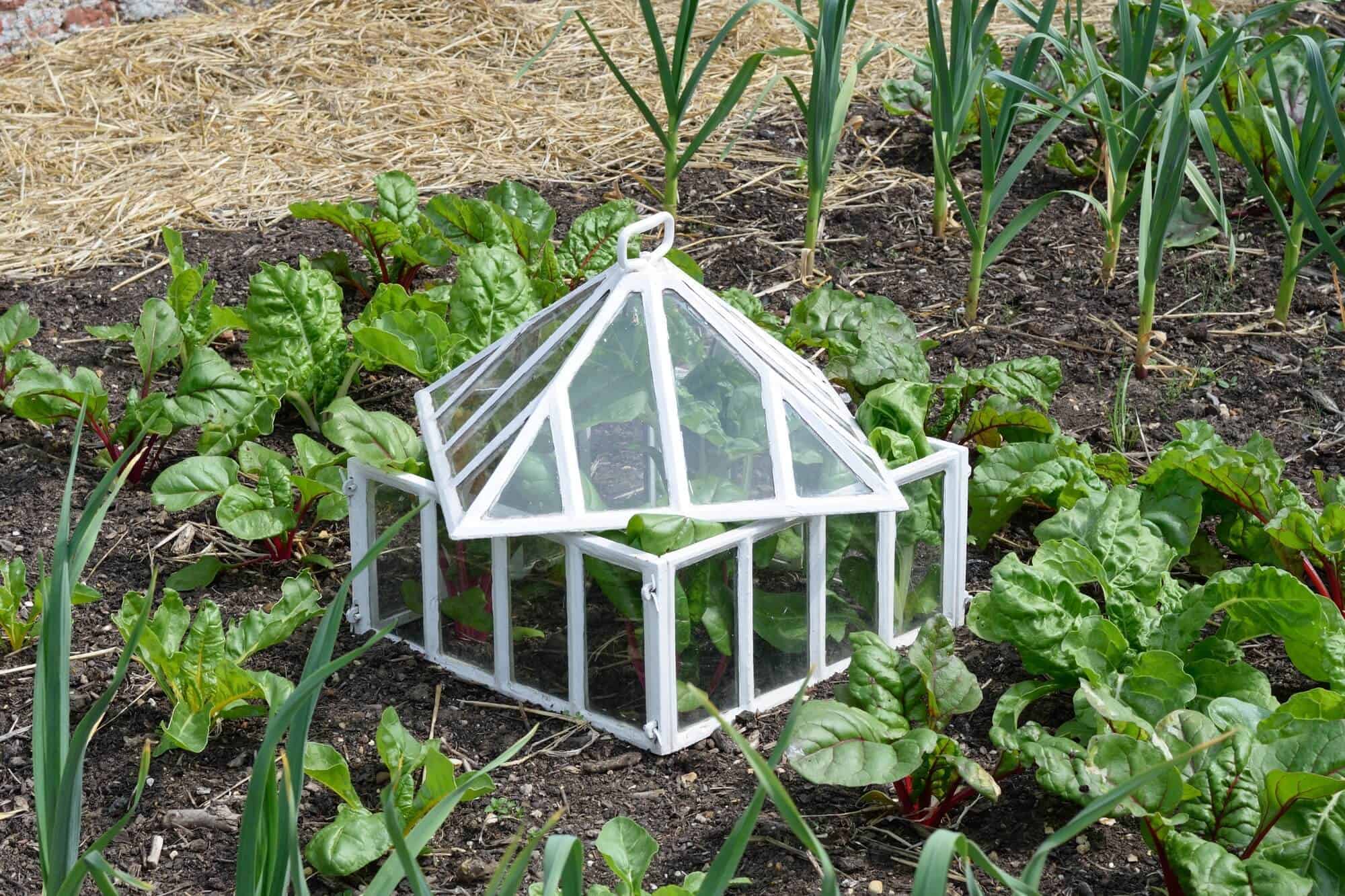It’s hard to match the pleasure of a flourishing garden. With the tomatoes stretching toward the sky, and my cilantro seedlings bursting from the soil, it’s hard to say which plant captures my heart most each season. But this year, I got a late start. My roommates and I all share a plot, and I expected one of them to start it, like last year, so I waited. And waited. Finally in June, I dove in with tomatoes, lettuce, and zucchini, hoping for the best. But as autumn hints at tis arrival in the cooler nights and windy afternoons, I have to wonder: what is there I can do to save my plants next month and still enjoy a bountiful harvest?
Turns out, the solution has been around since the 17th century. Popularized by the French, a cloche is a valuable way to extend your planting and harvesting seasons by weeks on either side of summer. “Cloche” is the French word for “bell”, and these little bell jars traditionally look just how you’d imagine them: glass jars placed over plants in finicky weather. Traditionally made of glass, garden cloches today can be found made from paper and plastic as well – although few things compare to the beauty of a glass cloche securing your tender seedlings. The glass ones are effective because glass refracts the light, heating up the internal temperature to keep plants warmer in frosty nights, as well as retaining water by keeping it from evaporating.
When these gardening beauties first emerged about 400 years ago, they were made of sturdy glass, resistant to heavy wind, and capable of keeping your seedlings safe from birds and other garden-loving materials. But they were also fragile, and prone to overheating plants; if you forget to vent your cloches before a hot day, your plants will be dead (or at least wilted) by the time you get home from work. Even though the glass ones are the most breakable, most expensive, and most cold-resistant, they reign as a garden favorite for their aesthetic value.
However, as the 20th century moved forward, people shifted to cloches made of cheaper, more lightweight plastics. And looking to save their wallets and make them at home, people have turned to cloches made of old plastic containers by cutting the bottoms out of old milk jugs or soda bottles. Unfortunately, plastic’s low price tag comes at another cost: #1 plastics, like those bottles and jugs, are known to leach chemicals – especially when exposed to heat and cold variations.
But if plastic is a must for your garden – say, you’re extending your tomato season into autumn and your pint jars won’t quite cover that two-foot-tall beefsteak bush – then it’s wise to look for plastic options specifically made for the garden, as those are often made of more durable materials not (yet) known to leach – and can last for several years without starting to degrade. For tomatoes, tall basil plants, or peppers, consider one of these tall garden cloches.
Another plastic cloche popularly used in climates known for intense cold snaps – I’m looking at you, Colorado – consider a water cloche, or water wall. Wall o’ Water is far and away the most reputable brand on the market, known for their durability and longevity. Water cloches are double-walled layers of plastic filled with water to better insulate the plant while providing enough sunlight. Counterintuitive as it seems on first thought, when the Wall o’ Water turns to ice on a cold day, it can keep plants safe in temperatures as low as 12°F. A pack of four water cloches made of recyclable #4 plastic, with instant-repair patches for leaks, clocks in at a hefty $70 – but may be worthwhile for all you northern gardeners.
With all these plastic cloches, however, it’s worth noting that the spirit of gardening is in the movement toward sustainability and a DIY enthusiasm. Plastic, regardless of its type, takes hundreds of years to degrade, with ramifications that will ripple for generations past us.
To that end, if you’re eager for a cloche that protects your late summer seedlings, but are wary of using plastic for them, you still have options. Paper cloches are a free, albeit less durable, option than plastic cloches, that apparently work better to protect against cold temperatures. To make a paper cloche, simply make a conical shape, and secure it around the plant using sticks as stabilizers. It is also recommended to use wax paper for a more waterproof alternative. This article from SF Gate offers instructions for more involved paper cloches – or the simple solution of a paper bag for particularly cold days.
And if you’ve got DIY etched into your bones – and let’s face it, if you’re reading an article on cloches and gardens, you probably do – consider making a cloche from your old glass bottles. Kirsten Bradley over at Milkwood Permaculture Blog has some in-depth instructions on cutting your own glass bottles into cloches without any fancy tools. With just a few things you may have around the house, you could be making your own 21st century, reusable bell jars made from your favorite wine, juice, or seltzer bottles.
Regardless of the cloche you use, remember to vent it – either by unzipping the plastic, placing wood blocks under the glass, or unscrewing the caps of your half-bottle cloches – on hot days to allow enough airflow to keep your plants blooming.
It’s not too early to stock up on cloches for the beginnings of autumn, especially if you’re like me and got a late start. I’m holding out hope for my tomatoes, basil, and lettuce to give me a solid yield well into October. Which plants are you wanting to protect, and what kind of cloche do you think you’ll use? Let us know in the comments below!
